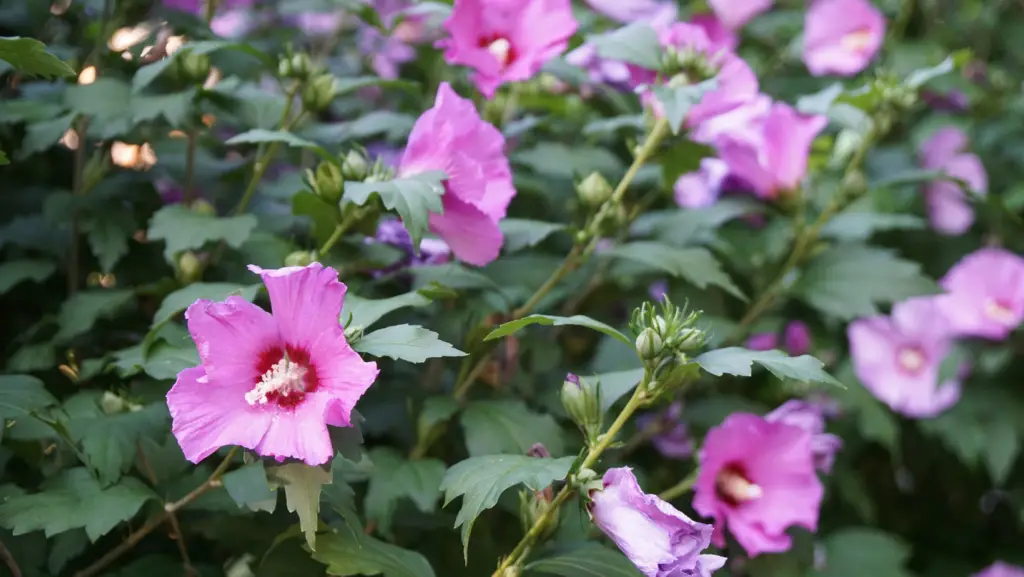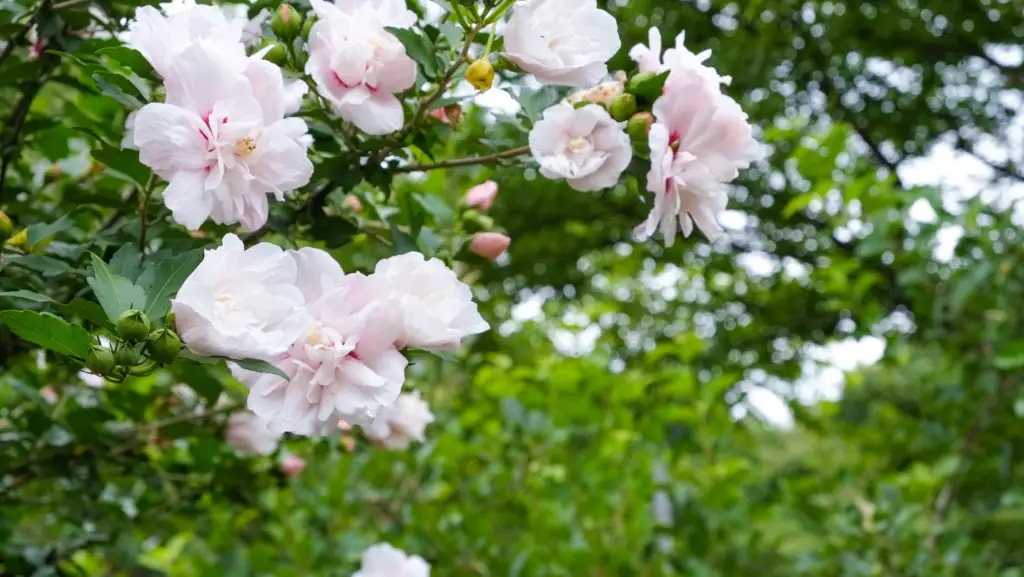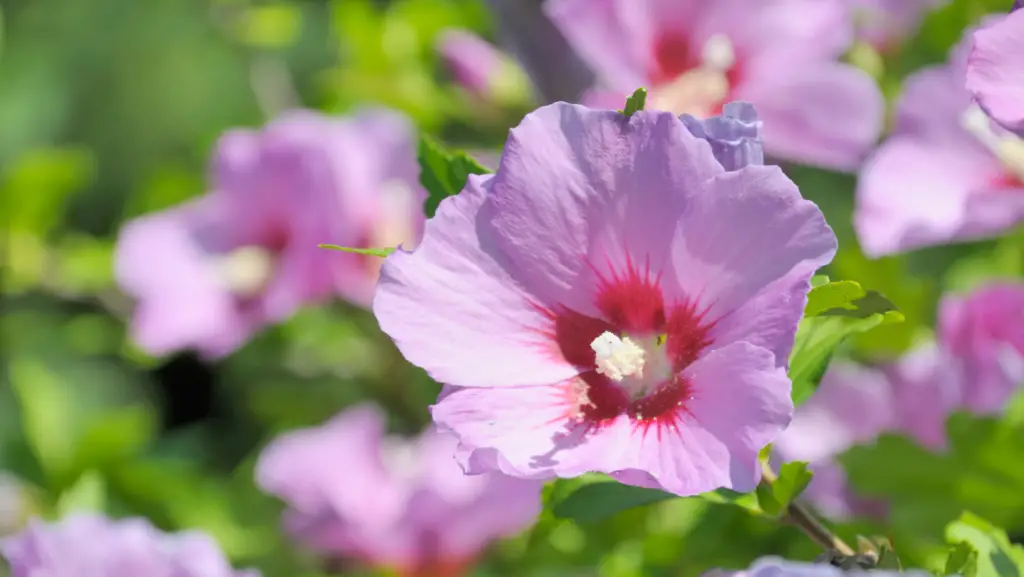
Hibiscus trees display large flowers in summer, reminiscent of their tropical cousins so emblematic of dream settings. But their resistance to cold allows them to be used in our regions.
In this article, I have gathered for you all the information about the althea plant, its main characteristics, and what you need to know to plant and grow it.
Characteristics of the Hibiscus
| Scientific name | Hibiscus syriacus |
| Family | Malvaceae |
| Origin | China, India |
| Foliage | Deciduous |
| Flowering | June-Septembre |
| Rusticity | -15°C to -20°C (-59 to -68°F) |
| Exposure | Sun |
| Soil | Fresh, rich and well-drained |
| USDA Plant Hardiness Zone: | 5 to 9 |
The hibiscus – or althea – is a shrub of 2 to 3 m in height, with a slightly flared bearing, which gives it an elegant silhouette, a little frozen because of the hard wood of its erect branches.
In summer, it blooms on the year’s branches with large single flowers with 5 petals, 6 to 10 cm in diameter, and a prominent central style.
It is frequently offered as a half-stem, a presentation particularly enhanced by pot culture.
How to grow an althea shrub

The althea shrub likes rich and fresh soils but does not appreciate wet soils in winter. It supports well the limestone. A sunny exposure is imperative, especially to obtain an abundant bloom.
Every year, in February or March at the latest, prune the secondary branches above the second or third bud located at the base of the branching. Choose an outward facing bud.
How to grow althea plants in pots
Re-pot plants that are already well-formed and well-structured and simply maintain them. Use a 30 to 40 cm pot for a plant of 1,50 m, and a potting soil with 1/5 of sand and 1/4 of decomposed manure.
Keep the soil cool at all times, but let it dry out completely between waterings in winter.
If you grow althea in a veranda, watch for whitefly attacks on the back of the leaves from March onwards, and treat at the first symptoms.
Re-pot only every 3 years but regularly add a fertilizer for flowering shrubs between March and October.
Where to plant a hibiscus shrub
As an isolated plant, in groups of 3 to 5 plants, varying the colors, in mixed hedges and in pots.
As a stem, position the althea above shrubs with foliage, such as eleagnus, spindle or escallonia.
Tip: The althea, because of its strict habit and its base with few leaves, is best dressed with a bed of low summer flowering shrubs, flowering or leafy perennials or grasses, to bring a little flexibility to the decor.
Our selection

Get acquainted with the old varieties because they have proved their worth and are still frequently offered in the trade:
- ‘Blue bird‘, very floriferous, with blue flowers of 8 cm;
- ‘Hamabo‘, abundantly flowering, with light pink flowers spotted with red, of 8 cm;
- ‘Red Heart‘, with white flowers with a scarlet heart, of 8 cm;
- ‘Woodbridge‘, vigorous and very floriferous, with red flowers of 8 cm;
- ‘Russian Violet‘, with dark mauve flowers of 10 cm.
Among the semi-double or double flowers, choose:
- ‘White Chiffon‘, with double flowers, pure white with cream center, 9 cm;
- ‘Lavander Chiffon‘, with large double mauve flowers, 9 cm;
- ‘Duc de Brabant‘, vigorous, with dark red flowers, 6 cm;
- ‘Speciosus‘, with large white double flowers, spotted with red in the center, which blooms relatively well, even with little light.
Conclusion
The althea is a beautiful plant. It is an elegant addition to any space and can withstand the cold weather in some areas which is sometimes difficult for many other plant species.
It does require some annual pruning, but once it’s set up properly and your althea has everything it needs to shine, the results are amazing.

Hi!
I am the guy behind Theyardable.com. I grew up on a homestead and I am here to share the knowledge I have and things I learn while living in the countryside.
